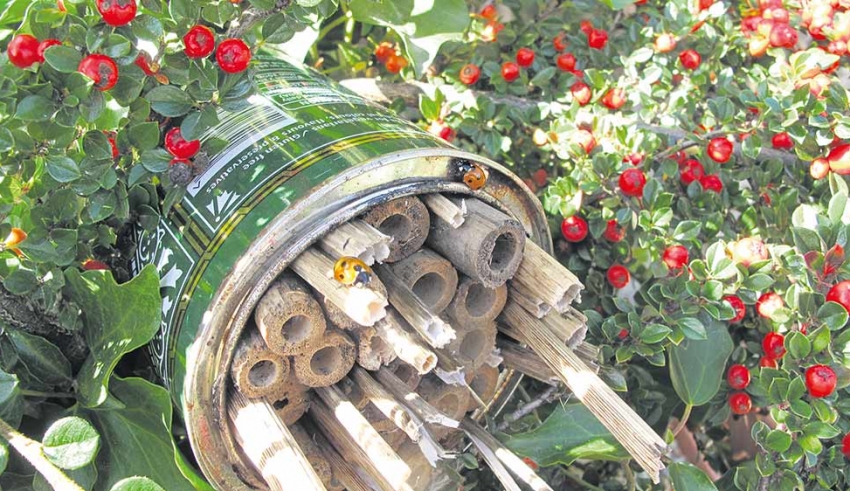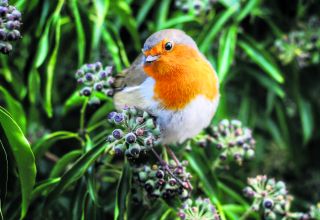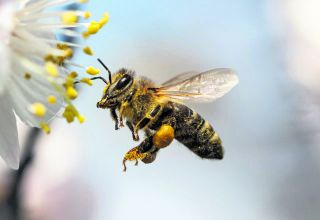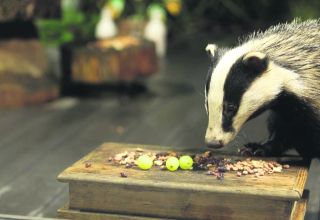
Elizabeth McCorquodale urges us not to be too eager to tidy away the fading stems of the passing year, and provide a winter paradise for a host of beneficial garden invertebrates
Being able to offer food and shelter to any garden creature in winter is a pleasure, be they garden birds, hibernating frogs or the liquid bronze of hibernating slow worms tucked up warm and cosy in your compost heap.
However, so often overlooked in the winter wildlife garden are all those creatures that are at the bottom of the food chain – the bugs, beetles, flies, butterflies and bees together with all the other invertebrates that really make your garden hum.
Winter is a tough time for these hardworking creatures and there are many things that we can do to ensure they have somewhere to shelter through the colder months, somewhere warm and dry and safe where they will be protected from the elements and from predating birds and mammals. Bug hotels, in all their guises, offer a cosy place for invertebrates to overwinter and they are easy and inexpensive to make or adapt from items found around your house and garden. The only limit is your imagination.
Bumble bees are often active late into autumn and early in spring. Usually only the queen lives through the winter and so only she hibernates. She will search out a warm dry spot under a pile of leaves or in grassy thicket and when she emerges early in spring she will be looking for a place to lay her eggs and raise her young. What type of nest she looks for will depend on which of the 24 British bumblebee species she is. Some nest underground in old mouse nests and other hollows already furnished with nesting material while others prefer a tunnel in an earthy bank or an abandoned bird box.
Having made her choice the bee will lay a clutch of eggs, then snuggle down to incubate them just like a broody hen. To feed herself she makes a little wax honeypot and fills it with honey made from the nectar she has collected from the flowers in her neighbourhood. She needs to visit hundreds of flowers every day.
For ground nesting bees a buried teapot makes a wonderfully insulated, weather-proof, early spring nest with a built-in entrance tunnel and comfy chamber. Place a handful of dry twigs in the pot and top with a handful of nesting material, leaving enough room for the queen and all her offspring to move around freely. Half-bury your beepot with the spout protruding above the soil and position an old slate or flat stone over the lid and spout to deflect the rain.
Suitable nesting material includes soft feathers, downy seed heads from plants such as wild clematis and natural sheep’s wool which has been liberated from fence wire. Bedding saved from the cages of pet mice may attract bees to your nests by scent – if you don’t have a pet mouse try asking for old bedding at a pet shop. Always site your bee nests along some sort of linear structure like a wall, fence or hedge and make sure the entrance tunnels are plainly visible – bees are observant, but they’re not telepathic!

Some species of bumblebee set their sights a bit higher and will adopt an abandoned bird box already furnished with nesting material. This sort of wooden nest box can easily be fitted with a plastic-covered peep-hole at the rear so you can observe the colony as they develop. Reduce the size of the entrance hole of the nest box by pushing some twigs into the entrance cavity.
Solitary bees are also great garden pollinators. They live their lives on their own, laying eggs along with a supply of food and then leaving them sealed in a chamber to fend for themselves. They are rather good-natured creatures, with curious names and fascinating life-stories. The mason bee, the carpenter bee and the charming leaf-cutter bee all provide a gentle child-friendly introduction to the natural world as they are easily spotted going about their business in the garden. It is very satisfying to dream up homes for these bees as they are often quickly and enthusiastically adopted. To make a bee post, drill a number of holes in a piece of timber using different sized drill bits to cater for different bees. Take the time to smooth the edges as most bees will shun a tatty, rough hole, and provide a back for your lodge so that the holes don’t turn into wind tunnels. Site your bee lodge in a spot that catches the morning sun and position it with the tunnels angled slightly downwards so water cannot collect in the holes.
Mason bees, as their name suggests, excavate their homes in the soft mortar between the bricks and stones of our houses. You can make wonderful mud huts for this type of bee simply by filling the holes in ventilation bricks with liquid mud and allowing it to dry.
Red Admiral, Peacock, Small Tortoiseshell, Comma and Brimstone butterflies all go into a dormant state in winter and can often be found motionless in corners of garden buildings. For butterflies that have fallen asleep in an inconvenient or dangerous place, gently lift and place the butterfly in a ventilated cardboard box and move it to a cool room until the weather begins to warm, then remove the lid and place the box in a dry, sheltered corner outside.
Ladybirds and lacewings are both voracious predators of aphids, scale insects, mites, thrips and small caterpillars. A single 7-spot ladybird can eat 3000 – 5000 aphids in a single season as can the beautiful lacewing – that is a lot of aphids! Both these insects overwinter as adults and they need a warm and cosy home to survive. You can easily make a lady bird or lacewing lodge from a tin can or a plastic bottle lined with corrugated cardboard for warmth and then filled with hollow bamboo or plant stems for shelter. Tuck the lodge in a sheltered spot, angled downwards to shed the rain. Research has shown that lacewing lodges are most effective if placed right near their spring food source so they can begin feasting on your pests the moment they emerge when the weather warms. Of course, the more winter homes you provide the more chance you have of attracting and keeping a good population of these charming invertebrates.
For the dedicated ground dwellers in your garden build a log pile to provide a home for hibernating creatures such as beetles. The perfect pile is constructed simply: dig over the soil on which it will sit so that creatures such as stag beetles have a layer of friable soil in which to lay their eggs and overwinter. Cover this with a bed of dry leaves, followed by a layer of small sticks and then add your logs. The logs should still be clothed in bark as many insects lay their eggs beneath the bark layer. Finish all this off by piling on a deep layer of leaves to help to shed the winter rains.
With these cosy havens sited near a selection of winter flowering plants such as primroses and mahonia, winter honeysuckle and heathers, together with a determination not to be too eager to tidy away the fading stems of the passing year, your garden will be a true winter paradise for a whole host of beneficial garden invertebrates.











